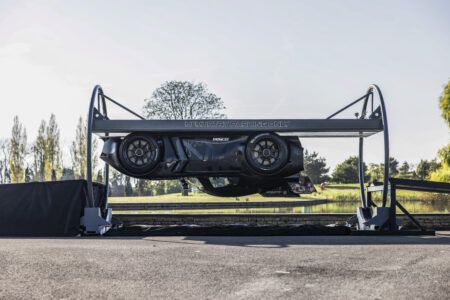Comprehensive computer simulations played a key role in the development of Volkswagen’s ID R Pikes Peak all-electric racing car – reducing battery weight by restricting system performance.
“Before we actually assembled the ID R Pikes Peak, we used computers to analyze a multitude of different configurations,” explained technical advisor to the project Willy Rampf. “It was clear to us that we would not have time to build multiple test vehicles. We had to get it right at the first attempt.”
Given the need to optimize the balance between performance and weight ahead of the vehicle’s attempt on the iconic hill climb’s electric vehicle record time, simulation was of vital importance.
“Simulation played a major role in achieving the low weight of the car,” said Rampf. Computers were used to design chassis parts to cope with anticipated loads and without being oversized – or overweight. As a result, the car (and driver) weigh less than 1,100kg.
Limiting the top performance of the ID R Pikes Peak to 500kW (680ps) enabled the battery blocks to use a compact design, and be positioned next to and behind the driver.
The vehicle also largely forgoes the ‘traditional’ use of materials such as titanium – for the most part steel, aluminum carbon fiber and a carbon-fiber/Kevlar composite are used.
You can read more on development of the ID R Pikes Peak here, and the vehicle’s aero setup here.





